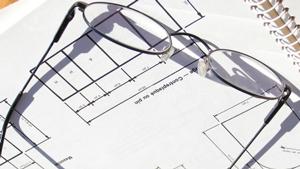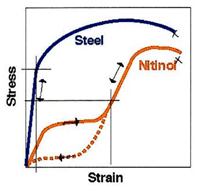Principal Engineer
- FMA
- The Fabricator
- FABTECH
- Canadian Metalworking
Categories
- Additive Manufacturing
- Aluminum Welding
- Arc Welding
- Assembly and Joining
- Automation and Robotics
- Bending and Forming
- Consumables
- Cutting and Weld Prep
- Electric Vehicles
- En Español
- Finishing
- Hydroforming
- Laser Cutting
- Laser Welding
- Machining
- Manufacturing Software
- Materials Handling
- Metals/Materials
- Oxyfuel Cutting
- Plasma Cutting
- Power Tools
- Punching and Other Holemaking
- Roll Forming
- Safety
- Sawing
- Shearing
- Shop Management
- Testing and Measuring
- Tube and Pipe Fabrication
- Tube and Pipe Production
- Waterjet Cutting
Industry Directory
Webcasts
Podcasts
FAB 40
Advertise
Subscribe
Account Login
Search
Adventures in titanium—3 questions about repairing titanium eyeglasses by welding
- By David Hass
- June 2, 2011
- Article
- Arc Welding
Nguyen was at his wits’ end. His favorite glasses had broken and no other frame would do. Sensitive to many types of metal and plastic, Nguyen could wear only titanium frames comfortably for any period of time. The local jewelers were unfamiliar with titanium repairs, and none of the local eyeglass shops offered options. All offered to sell him replacements.
Titanium frames are durable and very flexible, but when they break, there is not much you can do. Titanium can be spot-welded easily, and no argon cover is needed to protect the weld. When they weld the nosepiece brackets to the frames that hold the lenses, many manufacturers use spot welding as a quick and reliable method. Some aircraft parts are repaired in the same fashion. Laser welding with an argon cover is also used for titanium repairs. It is hot, fast, and limits the damage to the base metal.
Answering Nguyen’s Questions
With a quick Internet search, I found several eyeglass shops near Nguyen that did titanium repairs. His three questions after his initial visit to one of the shops proved informative:
1. As the jeweler planned to clean the area and laser-weld the metal back together in an argon chamber, Nguyen asked, “Does this align with your blueprint for successful welding?”
Answer: Sure! Welding inside an argon chamber is one of the better ways to weld titanium. Very little argon leaks out of a glove box. The gloves can be sealed after welding with gasketed covers to further reduce argon leakage after use. Thinner is better for the welder to have control over the torch, but worse for containing gas. Stand-alone bags leak much more, but they don't have the restrictions that working through a glove-box armhole imposes. If you're welding something bigger than a breadbox, bags may be a choice to consider. If high argon purity is absolutely essential to a quality weld, scrubbers that recirculate the argon through a chemical getter will ensure the atmosphere inside the box is clean.
2. When the jeweler told Nguyen he would weld on only one side of the broken frame, Nguyen asked, “Do you think that welding on one or two sides of the metal would make any difference in the bonding strength of the broken pieces?”
Answer: Welds are a "coalescence of metals or materials."† Whether you apply the torch on one side or both sides, the metal fuses together. It is usually important for an engineered structure that the weld leave no voids, notches, or gaps at the root of the weld, but this depends on the welding engineer's design of the joint, repair, and process. A solid piece of metal usually is the design. When in doubt, seek professional advice, beginning with the weld designer and welding procedure specification (WPS) whenever you can.
3. The jeweler's method of laser welding in the argon chamber produced very little heat and no oxygen. Nguyen asked, “Does this mean that the welding will not burn or scar the frame?”
Answer: 3,000 degrees F is quite a lot of heat, and organic finishes won't last in molten titanium. Even if the organics do survive, welding "dirty" metal is a poor approach to a good weld. Paint, grease, oil, scale, fingerprints, and who knows what else can all be sources of oxygen, carbon, and nitrogen in the plasma, which can lead to contamination of the weld pool and a poor weld.
Nguyen's real question was, “Will the entire frame be scarred from the weld?”
Answer: Titanium does not conduct heat very well, so no. The cushions that fit over the ears are not affected when the repair is close to the hinge. Patination with chemicals or plating might match the original finish, as could paints. Judging from the occasional peeling of a clear coat on my own eyeglass frames, there must be a number of ways to achieve a desired color. Anodizing creates a scratch-resistant surface that is about 2 to 20-plus atoms thick. The anodized surface contains oxygen, which prevents corrosion. Such a surface can be porous and hold tints and dyes better than a shiny metal surface.
The effect of a weld on the original base metal depends on the previous heat treatment of the metal before the weld. Since the laser is a concentrated, pinpoint heat source, and the pool is very small, most of the frame will retain the original flexible characteristic.
Nguyen's questions were answered, and his repaired earpieces remain flexible, with only a small shiny spot to show the "fix." He learned a bit about welding metallurgy, and his eyeglasses aren’t in the trash. A local business remains in business, and Nguyen was so pleased with their work, he let them fix another broken pair of his titanium frame glasses. He promotes this shop to his friends and encourages them to read thefabricator.com to find their own answers, rather than subscribe to a throwaway ethic.
Eyeglass Alloys
Some frames are made of nitinol (nickel-titanium intermetallic compounds), which is a superflexible alloy. Instead of the inverted J shape of most stress-strain curves, nitinol has a hysteresis plateau before reaching the yield stress.‡ For the metallurgists: There is a diffusionless transformation from the austenite to martensite, similar to steel; but the temperature at which these transformations occur is much lower. Transformations occur in the range of room temperature to boiling water. These thermal-shaped memory alloys can be deformed at low temperatures, and on heating they recover the original shape. The transformation occurs when the martensite twins detwin. Once the form of the eyeglasses is set at high temperature, the metal parts can be twisted, stretched, or crushed significantly, and the frames snap back. In the operating room, stents that respond by opening after insertion keep blood vessels open.
Shape memory alloys also are used as pipe couplings where swaging tools cannot reach. When heated, they shrink around the pipe. The problem for the welder is the heat of the torch removes the effects of the previous manufacturing. The area around the weld will be the same as the as-cast base metal. The glasses are “fixed,” but the properties are not exactly the same as the original.
Alternate Repair Technique
Spot welding works well for titanium and does not need an argon cover. Spot welding is pretty easy to set up for two mutually flat surfaces. A given voltage, amperage, and pressure cycle produce very repeatable results. Usually these schedules are shown as curves plotted on a time axis. The challenge was how to establish curves for broken spot welds that were to be re-spot-welded. Broken surfaces of a spot weld can be a straight-across shear surface that is very close to the original flats, or it can be very rough.
At the other end of the spectrum, broken welds could have surface asperities that create a miniature moonscape of peaks and valleys, increasing the effective surface area by as much as a full order of magnitude.
How can one curve account for all these variations? I knew the curve I wanted the weld to follow, but to make it work consistently, a welder must recognize the difference between amber-waves-of-grain flat and purple-mountain-majesties rough. Training multiple welders in an esoteric and rather arbitrary scale of roughness based on what they can see without magnification was not really the direction I wanted to go.
Enter computer controls. A number of companies have devices that can modify the original settings, but at that time, only one could work from an original curve and adjust the amperage during the split-second welds. Regardless of the surface roughness, the welding curve stayed the same! The control has been in use for over seven years now, and not only have there been no failures of any test specimens, there have been no reported failures of the welds in the field.
What Happens When You Weld Metal?
For the welders: Heating metal means some change in mechanical properties. Most alloys will soften, but some will not. It all depends on the previous thermomechanical history. A solution-treated alloy is intentionally heat treated, so the alloying elements are mixed in a solid solution. Heating during welding can create a precipitation effect, strengthening or possibly embrittling the alloy around a heat affected zone (HAZ).
In the weld nugget, the structure has melted. It looks more like a casting than anything else. The more complex the alloy, the more likely the welded structure will not match the base metal properties. The challenge for an engineer is to understand these changes, ensure the design can withstand the reduced stress or fracture toughness, and still have a usable part. Always check the WPS or other specifications for the weld to see if there are special handling requirements for the alloys you weld.
†American Welding Society's definition of a weld.
About the Author

David Hass
2701 Liberty Parkway, Suite 306
Midwest City, OK 73110
405-458-6069
About the Publication
subscribe now

The Welder, formerly known as Practical Welding Today, is a showcase of the real people who make the products we use and work with every day. This magazine has served the welding community in North America well for more than 20 years.
start your free subscription- Stay connected from anywhere

Easily access valuable industry resources now with full access to the digital edition of The Fabricator.

Easily access valuable industry resources now with full access to the digital edition of The Welder.

Easily access valuable industry resources now with full access to the digital edition of The Tube and Pipe Journal.
- Podcasting
- Podcast:
- The Fabricator Podcast
- Published:
- 04/16/2024
- Running Time:
- 63:29
In this episode of The Fabricator Podcast, Caleb Chamberlain, co-founder and CEO of OSH Cut, discusses his company’s...
- Industry Events
16th Annual Safety Conference
- April 30 - May 1, 2024
- Elgin,
Pipe and Tube Conference
- May 21 - 22, 2024
- Omaha, NE
World-Class Roll Forming Workshop
- June 5 - 6, 2024
- Louisville, KY
Advanced Laser Application Workshop
- June 25 - 27, 2024
- Novi, MI


































